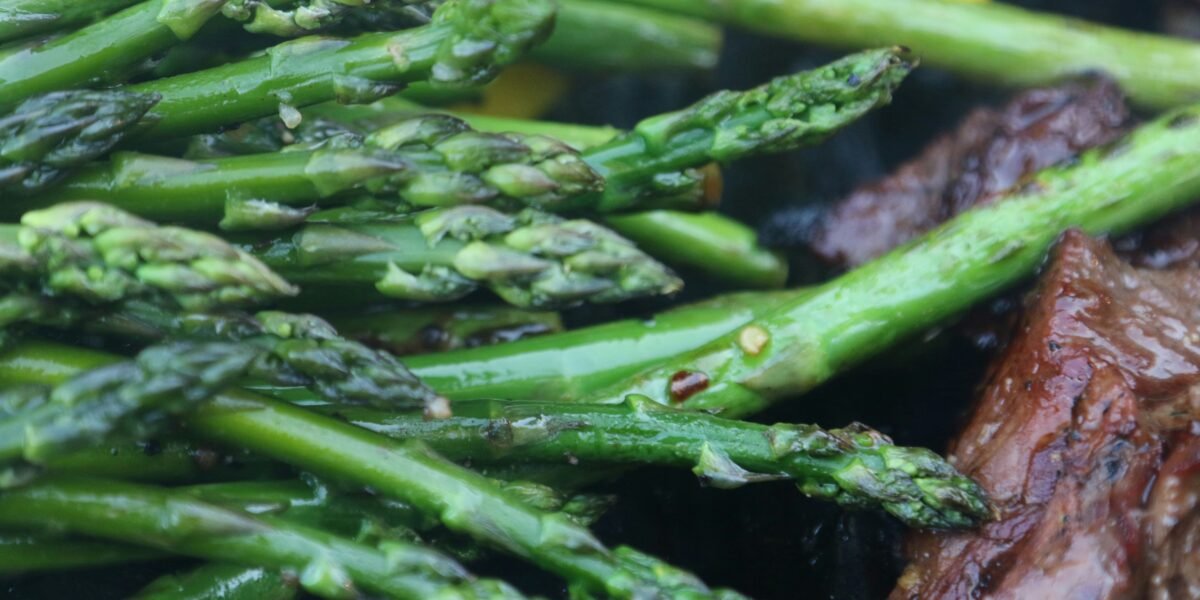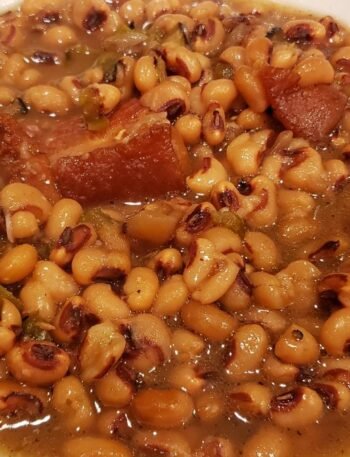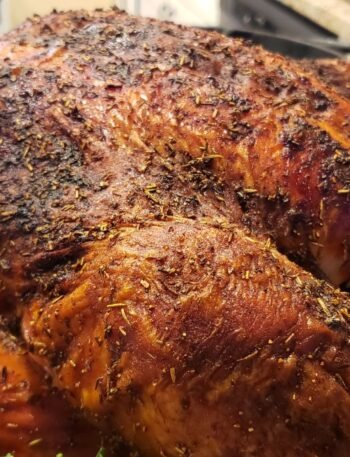Why You’ll Love This Recipe
This pan-roasted asparagus recipe is elegant yet simple, providing a crisp, fresh, and colorful addition to any meal. Not only does it bring a pop of green to the plate—perfect for holiday spreads—it’s also packed with flavor from just a few quality ingredients. The slight caramelization from the pan roasting enhances the natural sweetness of asparagus, while the optional addition of garlic and lemon zest elevates the dish even further.
The Inspiration Behind the Recipe
Thanksgiving tables are often filled with warm, earthy colors from classic dishes like stuffing, mashed potatoes, and sweet potatoes. To add a touch of elegance and freshness, I wanted a bright green side dish. This pan-roasted asparagus was the perfect choice, breaking up the brown and orange hues with vibrant color and flavors, and it became an instant family favorite.
Variations of the Recipe
Pan-roasted asparagus is flexible and can be easily adapted:
- Garlic and Parmesan: Add freshly minced garlic toward the end of cooking and sprinkle Parmesan over the top for a savory, cheesy twist.
- Spices and Herbs: Try adding crushed red pepper flakes for heat or sprinkle on fresh herbs like thyme or rosemary for an aromatic finish.
- Vegan-Friendly Option: Swap the Parmesan for nutritional yeast for a plant-based, cheesy flavor.
- Citrus Flavor Boost: Use lemon or lime zest, or squeeze in fresh juice right before serving for extra brightness.
Common Mistakes to Avoid
Here are some common mistakes to sidestep for best results:
- Overcrowding the Pan: When the pan is too full, the asparagus steams rather than roasts, leading to a softer, less caramelized result. Be sure the spears are in a single layer with space around them.
- Overcooking: Asparagus should be tender-crisp, not mushy. Stick to the recommended cooking time and adjust based on the thickness of your asparagus.
- Adding Garlic Too Early: Garlic can burn quickly in a hot pan. Add it only during the last few minutes to prevent bitterness.
Ingredient Spotlight
Asparagus
Asparagus is the star of this dish. Known for its fresh, green flavor and crunchy texture, asparagus is rich in vitamins A, C, and K, and adds a light, crisp element to your meal.
Olive Oil
Olive oil helps bring out the natural flavors of asparagus while ensuring even browning. It’s also a heart-healthy fat that adds richness to the dish.
Nutritional Information (Per Serving)
- Calories: ~85
- Carbohydrates: 4g
- Protein: 2g
- Fat: 7g
- Fiber: 2g
- Key Nutrients: High in vitamins A, C, and K, and a good source of fiber.
Cooking Tips for Perfect Results
- Choose Fresh, Crisp Asparagus: Look for spears that are firm and vibrant green with tightly closed tips.
- Trim Properly: Snap or cut off the woody ends for the best texture.
- Use a Cast Iron Skillet: This helps achieve the perfect caramelization. You can serve the asparagus straight from the skillet for a rustic presentation.
Reader Q&A
Can I freeze the asparagus after cooking?
Yes, but asparagus is best enjoyed fresh or reheated the next day. To freeze, blanch for 1-2 minutes before roasting to help maintain texture.
What can I substitute if I don’t have lemon?
Try a dash of vinegar or orange zest for a subtle acidity. Balsamic vinegar also complements the flavors nicely.
How do I know when the asparagus is done?
The asparagus should be tender but still crisp when pierced with a fork. It takes about 5-8 minutes, depending on thickness.
Pairing Ideas
Pan-roasted asparagus is a versatile side dish that pairs well with a range of mains. Try it alongside:
- Grilled Salmon or Chicken: The lightness of asparagus complements grilled meats perfectly.
- Pasta Dishes: Serve with a creamy or lemony pasta for a complete meal.
- Wine Pairing: A crisp white wine like Sauvignon Blanc or Pinot Grigio complements the earthy, fresh flavors of asparagus.
Behind the Scenes
For an extra rustic touch, consider cooking and serving this asparagus in a cast iron skillet. Not only does it create a beautifully browned finish, but the skillet also keeps the dish warm when served directly at the table.
Recipe Notes
- Add a Hint of Spice: A pinch of crushed red pepper can give the asparagus a bit of heat without overpowering its natural flavor.
- Substitute for Olive Oil: You can also use avocado oil or melted butter for a slightly different flavor profile.
- Adjust Salt Carefully: If adding Parmesan, hold back on initial salt to prevent over-seasoning.
Serving Suggestions
This dish is best served hot, straight from the skillet. It adds a fresh, vibrant touch to holiday feasts and works equally well as a quick weekday side. For a balanced meal, pair it with protein-rich dishes like roasted chicken, grilled steak, or baked fish.
Storing and Reheating
To store, keep leftovers in an airtight container in the refrigerator for up to 3 days. Reheat in a skillet over low heat or in the microwave in short intervals to prevent overcooking. Avoid freezing if possible, as asparagus may lose its tender-crisp texture.

Pan Roasted Asparagus
Equipment
- 1 Large skillet or frying pan
- 1 Tongs
- 1 Cutting Board
- 1 Knife
Ingredients
- 1 bunch fresh asparagus trimmed and cleaned
- 1-2 tbsp olive oil
- 1 pinch Salt and pepper to taste
- 1 clove garlic minced (optional)
- 1 tbsp Grated Parmesan cheese optional
Instructions
- Prep the Asparagus: Rinse and trim the asparagus. Snap or cut off the tough, woody ends.
- Heat the Pan: Place a large skillet over medium-high heat and add the olive oil. Heat until the oil shimmers but isn’t smoking.
- Cook the Asparagus: Add the asparagus to the skillet in a single layer. Season with salt and pepper to taste. Let it cook undisturbed for 2–3 minutes until it starts to brown.
- Stir and Add Garlic: Toss the asparagus to cook evenly on all sides. Add the minced garlic if using, and continue cooking for another 3–5 minutes until the asparagus is tender and slightly caramelized.
- Finishing Touches: Remove from heat and sprinkle with Parmesan cheese.
Notes
Nutrition
Discover more from In The Kitchen With Vic
Subscribe to get the latest posts sent to your email.





